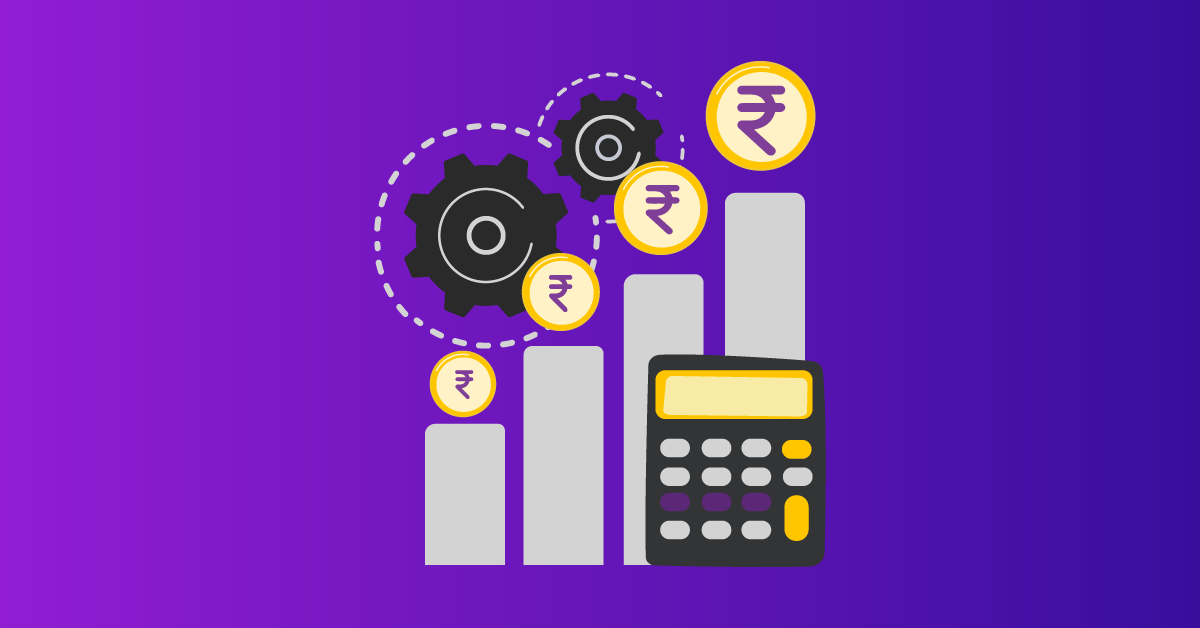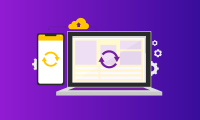What is CPM? How Can Publishers Increase CPM?
Views have become a powerful tool for advertisers, serving as a key indicator of a campaign’s reach and engagement. They are the currency of the digital age, showcasing the extent to which an ad has been seen by an audience.
In the world of online advertising, views are considered a fundamental aspect of campaign evaluation, but their journey to becoming a staple metric has been anything but straightforward. Cost Per Mille (CPM) as a pricing model has played a pivotal role in the view-centric approach to ad success.
Let’s explore how utilizing view tracking as a metric can benefit stakeholders in the field of ad technology.
What is CPM?
CPM stands for “Cost Per Mille” and it is a common advertising metric used to measure the cost of reaching a thousand impressions or views of an advertisement. In the context of digital advertising, an “impression” or “view” refers to each instance in which an ad is displayed to a user, regardless of whether the user interacts with the ad or not.
CPM is typically used in online advertising, particularly for display ads, social media ads, and other forms of digital advertising where the primary goal is to increase brand visibility or awareness. Advertisers use CPM to understand the cost of exposing their ad to a thousand potential viewers or visitors to a web page, app, or platform.
What is the formula to calculate CPM?
The formula for calculating CPM is straightforward:
CPM = (Total Cost of Advertising / Total Number of Impressions) * 1000
For example, if an advertiser pays $500 for a digital ad campaign and the ad receives 100,000 impressions, the CPM for that campaign would be:
CPM = ($500 / 100,000) * 1000 = $5 CPM
In this case, the cost to reach 1,000 impressions is $5.
Who uses CPM?
CPM (Cost Per Mille) and eCPM (Effective Cost Per Mille) are metrics used by different stakeholders in the digital advertising ecosystem. It is primarily used by advertisers and publishers.
- Advertisers
Advertisers use CPM to determine how much they are willing to pay for every thousand impressions (views) of their advertisements. CPM helps advertisers evaluate the cost-effectiveness of reaching their target audience and building brand visibility. Advertisers may choose CPM when their primary goal is to increase brand awareness and exposure.
- Publishers
Publishers, who own websites, apps, or other digital platforms, use CPM to price their ad inventory. They charge advertisers based on the number of impressions their ad spaces generate. Publishers benefit from CPM as it provides a predictable revenue stream for displaying ads on their platforms.
What are the benefits of measuring CPM for publishers?
CPM is a versatile tool that can significantly impact a publisher’s monetization strategies. Here are the benefits of using CPM as a metric for publishers.
- Predictable revenue
CPM provides publishers with a clear and predictable income stream. By knowing how much they’ll earn for every thousand ad impressions, publishers can budget effectively and plan for growth.
With the ability to calculate precisely how much revenue will be generated for every thousand ad impressions, publishers gain a powerful tool for financial planning and strategizing.
This predictability extends beyond day-to-day operations. Publishers can confidently set long-term goals, allocate resources, and make informed decisions about scaling their online presence.
- Diverse ad types
The CPM model aligns with different types of ads and ad formats. Different ad types can attract a higher demand from advertisers, leading to increased competition for ad space. When advertisers vie for placements in various formats, it often results in higher CPM rates, ultimately boosting revenue for publishers.
Various ad formats can be strategically integrated into different types of content. For example, video ads may complement video content, while native ads can seamlessly fit into articles or blog posts. This alignment between ad format and content type improves user experience and engagement.
- Aligns with various ad models
CPM can be seamlessly integrated into a publisher’s monetization strategy alongside other methods such as CPC (Cost Per Click) and CPA (Cost Per Action). This diversity allows publishers to optimize their revenue generation while catering to different advertiser preferences.
Market trends and advertiser preferences can evolve over time. By offering a mix of pricing models, publishers can adapt to these changes more easily. They can quickly shift their focus to the pricing model that aligns with the prevailing industry trends, ensuring continued monetization success.
The diversified approach allows publishers to make more accurate revenue forecasts. They can analyze historical data to project earnings based on the mix of CPM, CPC, and CPA campaigns, providing a clearer financial picture and aiding in budget planning.
- Competitive bidding
Publishers using CPM pricing often attract multiple advertisers interested in reaching their audience. When several advertisers compete for the same ad space, it can drive up CPM rates as they bid against each other to secure impressions. Higher CPM rates translate to increased revenue for publishers.
Advertisers find CPM appealing because it offers predictability in terms of costs. They know upfront how much they will pay for a specific number of ad impressions. This predictability helps advertisers budget effectively and plan their campaigns with confidence.
What is the difference between CPM and eCPM?
While CPM focuses solely on the cost of impressions, eCPM provides a more comprehensive view by considering revenue generation across various pricing models. eCPM is a valuable metric for assessing the overall effectiveness of digital advertising campaigns and optimizing strategies for both advertisers and publishers.
Here’s everything you need to know.
CPM vs eCPM
| Factor | CPM (Cost Per Mille) | eCPM (Effective Cost Per Mille) |
| Definition | Cost per thousand ad impressions. | Estimated earnings per thousand impressions, taking into account different pricing models. |
| Pricing Model | Advertisers pay a fixed rate per 1,000 impressions, regardless of user actions (clicks or conversions). | Reflects estimated earnings based on the actual performance of ads, considering various pricing models like CPC, CPM, CPA, etc. |
| Payment to Publishers | Publishers receive payment from advertisers based on the agreed CPM rate for displaying ads on their platforms. | Publishers earn revenue from various sources, including CPM, CPC, and CPA campaigns, depending on user interactions and ad performance. |
| Focus | Focuses solely on the cost of impressions and ad delivery. | Focuses on revenue generation, considering both impression-based and performance-based earnings. |
| Calculation | CPM = (Total Cost / Total Impressions) * 1000 | eCPM = (Total Earnings / Total Impressions) * 1000 |
| Use Cases | Commonly used for brand awareness campaigns, where advertisers aim to maximize ad visibility and exposure. | Used for comprehensive performance evaluation across different pricing models, making it valuable for both advertisers and publishers. |
| Advertiser Perspective | Advertisers pay for ad impressions upfront and have cost predictability. | Advertisers assess the overall campaign performance and efficiency across various pricing models, helping them make informed decisions. |
| Publisher Perspective | Predictable revenue stream based on impressions served. | Allows publishers to evaluate their overall revenue generation, accounting for different pricing models, providing insights into which models are most profitable. |
| Monetization Strategy | Often used by publishers to monetize their websites or apps through display ads, video ads, and more. | Allows publishers to optimize their content monetization strategy by assessing the effectiveness of various pricing models. |
| Performance Tracking and Optimization | Limited in assessing ad performance beyond impressions, making it less suitable for performance-oriented campaigns. | Offers a comprehensive view of ad performance, enabling publishers and advertisers to optimize strategies based on actual revenue data. |
| Example Scenario | An advertiser pays $5 CPM for 100,000 ad impressions, resulting in a $500 cost for the campaign. | An advertiser runs a campaign with a mix of CPM, CPC, and CPA ads. The eCPM calculation provides insights into the overall campaign’s revenue efficiency, helping the advertiser fine-tune their strategy. |
How can publishers increase CPM?
- High-quality content
High-quality content engages visitors and encourages them to spend more time on your website. When users find valuable and relevant information, they are more likely to explore multiple pages and return for future visits. This increased engagement results in a higher number of ad impressions as users navigate through your content.
Content crafted to resonate with its audience is in sync with well-executed SEO strategies. When your content is well-structured, informative, and relevant to user queries, search engines are more likely to rank your pages higher in search results. This visibility can drive organic traffic to your site, increasing the number of potential ad impressions.
- Focus on user experience
Publishers must ensure that their website is responsive and mobile-friendly. It is not only crucial for a positive user experience but also for optimizing your CPM (Cost Per Mille) revenue. A responsive design adapts your website’s layout and content to different screen sizes and devices. This ensures that users have a seamless and enjoyable experience, regardless of whether they access your site on a desktop computer, tablet, or smartphone.
Given the increasing use of mobile devices for web browsing, having a mobile-friendly website is imperative. Mobile users should find it easy to navigate your site, access content, and interact with ads without experiencing usability issues.
- Strategic ad placement
Ad placement plays a crucial role in user experience. Ads should be strategically positioned to complement, rather than disrupt, the user’s journey through your content. Avoid intrusive ad placements that obstruct content or impede navigation.
Ensure that ads do not disrupt the user’s experience. Pop-up ads, auto-playing videos with sound, or excessive ad density can be intrusive and deter users. Such practices may lead to higher bounce rates and decreased ad impressions.
The relationship between your content and ads should be harmonious. Ads should complement the content by offering products, services, or information relevant to the user’s interests. The alignment enhances the user experience and increases the chances of ad interaction.
- Anti-blocking strategy
Ad blockers are designed to improve the user experience by eliminating intrusive or unwanted ads. However, ad blockers pose a challenge to publishers who rely on ad revenue, including CPM (Cost Per Mille) earnings. Implement anti-ad-blocking scripts on your website.
Implement anti-ad-blocking scripts on your website. These scripts detect the presence of ad blockers and prompt users to disable them or whitelist your site. By recovering ad impressions from users who comply, you can mitigate some of the revenue loss.
Join acceptable ad programs like the one offered by the Coalition for Better Ads. These programs allow certain non-intrusive ads to bypass ad blockers, ensuring that at least some ad impressions are served to your audience.
- Audience analysis
Understanding your audience through data analysis plays a critical role in increasing CPM (Cost Per Mille) by providing valuable insights that inform strategic decisions. It allows publishers to segment their audience based on demographics, behavior, interests, and other criteria. By understanding their audience better, publishers can offer advertisers highly targeted ad placements, which often command higher CPM rates.
Publishers can also analyze the historical performance of ad placements, formats, and designs using data analysis. This insight helps identify which ad strategies are most effective in terms of generating higher CPM rates and optimizing ad placements accordingly.
- Ad tech platforms
Ad tech platforms typically offer advanced targeting capabilities and data analytics tools. This enables publishers to segment their audience effectively and deliver more targeted ad placements, which can attract advertisers willing to pay premium rates for specific audience segments.
Many ad tech platforms support real-time bidding, which allows advertisers to compete for ad impressions in real-time auctions. This competition can drive up CPM rates as advertisers bid against each other for placements.
The continuous process of testing and optimizing is the cornerstone of keeping CPM rates on the rise and maximizing ad revenue. By refining ad placements, formats, content strategies, and user experiences, publishers can adapt to evolving market dynamics, enhance their ad inventory’s value, and make data-driven decisions that ensure sustained revenue growth.
In the dynamic world of digital advertising, a commitment to testing and optimization is the path to consistently increasing CPM and securing long-term success in the realm of online publishing.




Leave a Reply